Leaf Diseases of Hardwoods
Powdery Mildews
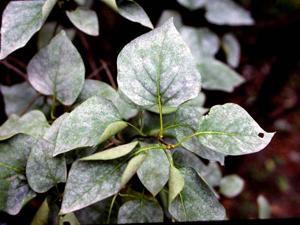
Powdery mildew with the white mycelium covering the surface of the leaves.
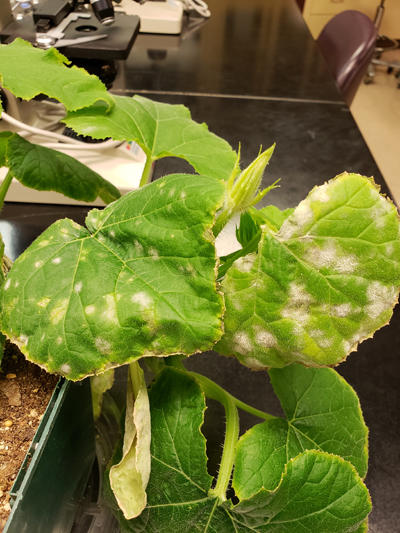
Powdery mildew on squash growing in the greenhouse. The white surfaces produce large numbers of conidia.
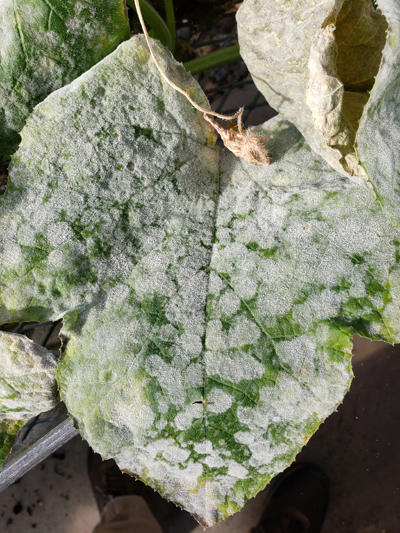
Advanced stage of powdery mildew showing a very powdery appearance
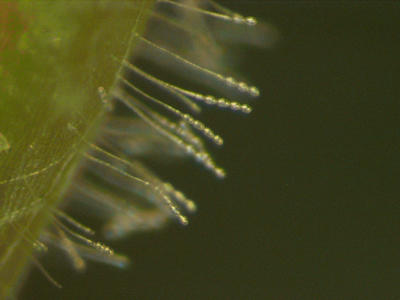
Powdery mildew conidia forming on a grape leaf (From Australia Agriculture and Food website). Chains of conidia are formed on conidiophores.
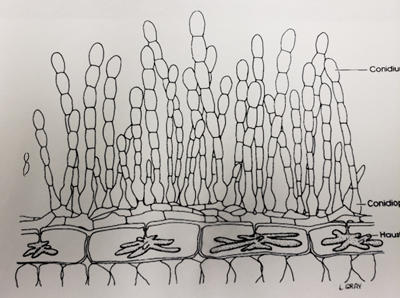
Illustration of conidia produced on leaf surface. Conidia, conidiophores and haustoria are shown.
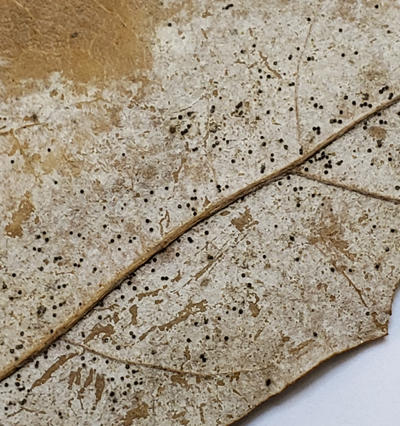
Oak leaf showing powdery mildew and cleistothecia (also called chasmothecia) (black dots).
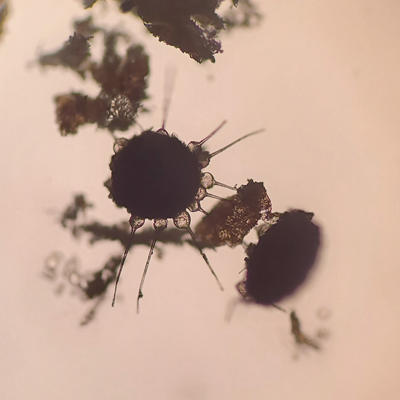
Cleistothecia on the oak sample. This was one of the unknowns in the lab. Look closely to see the features on the appendages. See handout to determine what this powdery mildew is named.
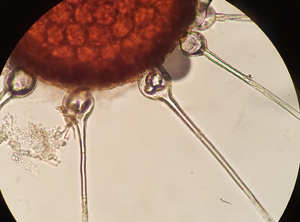
Another view of the powdery mildew on oak.
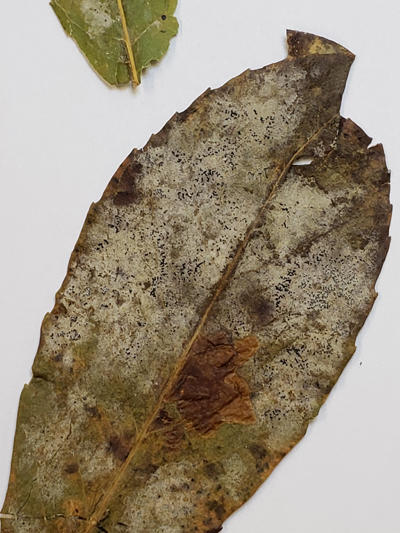
Willow leaf with powdery mildew and cleistothecia (small black dots).
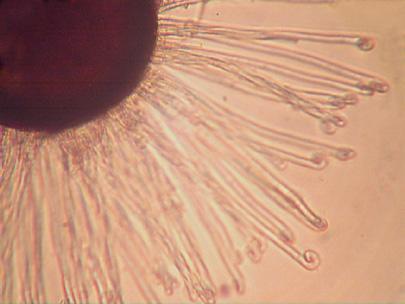
Cleistothecia from the willow leaf. Note the outer ends of the appendages. See handout to identify this powdery mildew.
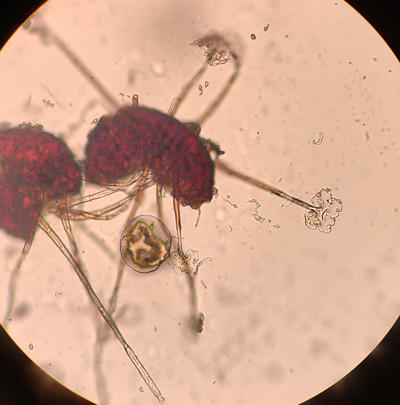
A cleistothecia with one ascus that was broken out of it (round structure at bottom - you cannot see the ascospores in it but when mature it would have 8 ascospores inside). Note end of appendage with ornamentation. What is this powdery mildew called?
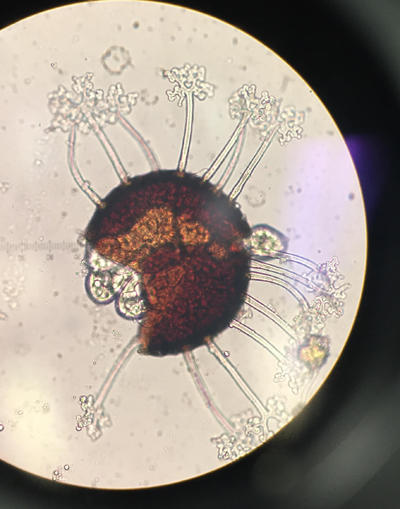
This powdery mildew is from lilac leaves. The cleistothecia was broken open and many asci are present Each ascus has some ascospores developing. Note appendages with ornamentation. What is this powdery mildew called?
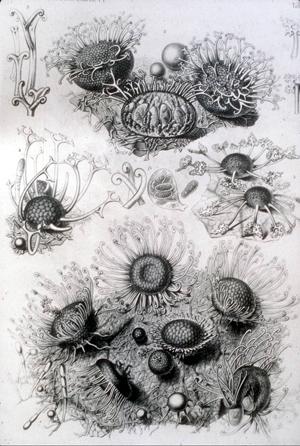
A drawing from the 1800's showing a few different types of powdery mildews with different appendages on the cleistothecia